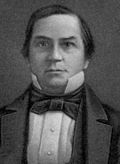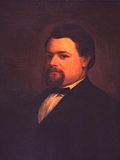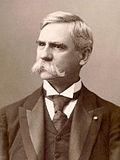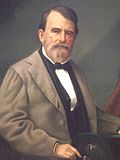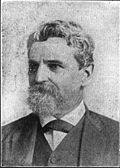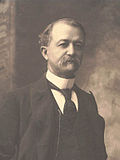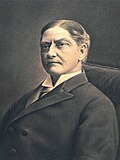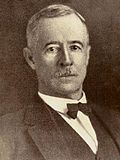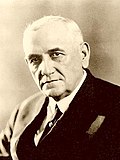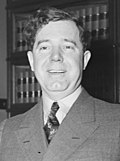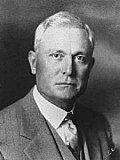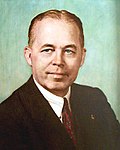Top Qs
Timeline
Chat
Perspective
List of governors of Louisiana
From Wikipedia, the free encyclopedia
Remove ads
The governor of Louisiana is the head of government of the U.S. state of Louisiana. The governor is the head of the executive branch of Louisiana's state government and is charged with enforcing state laws. Republican Jeff Landry has served as the current governor since January 8, 2024.
List of governors
Summarize
Perspective
Territory of Orleans
Louisiana was purchased by the United States from France in 1803.[1] On October 1, 1804, Orleans Territory was organized from the southern part of the Purchase, with the remainder being made the District of Louisiana and placed under the jurisdiction of Indiana Territory.[2] The District of Louisiana would later become Louisiana Territory, but after Orleans Territory became the state of Louisiana, Louisiana Territory was renamed Missouri Territory.[3]
State of Louisiana
Louisiana was admitted to the Union on April 30, 1812.[15] It seceded from the Union on January 26, 1861,[16] and it was a founding member of the Confederate States of America on February 8, 1861.[17] However, since substantial parts of the state remained in Union hands throughout the war, there were two lines of governors elected. Following the end of the American Civil War, Louisiana during Reconstruction was part of the Fifth Military District, which exerted some control over governor appointments and elections.[18] Louisiana was readmitted to the Union on July 9, 1868.[19]
The 1812 constitution established the office of governor, to serve for four years[20] starting from the fourth Monday after the election.[21] In 1845, the start date was moved to the fourth Monday of the January after the election;[22] in 1864, it was moved to the second Monday of the January after the election;[23] in 1879 it was moved to the first Monday after the General Assembly announced the election result; the 1921 Constitution fixed the new inauguration date as the second Tuesday in May.[24] The 1974 Constitution changed the date, effective in 1980, to the second Monday of the March following the election; this was amended in 1987, to become effective in 1992, to the second Monday of January.[25] Governors were not allowed to succeed themselves[26] until 1864, when the constitution held no term limits. The restriction on governors succeeding themselves was reintroduced in 1868,[27] removed in 1870,[28] and again added in 1898.[29] An amendment to the constitution passed in 1966 allowed governors to succeed themselves once before requiring a gap before they can be elected again.[30] Five governors have served nonconsecutive terms. Andre B. Roman, Francis T. Nicholls, and Jimmie Davis each served two non-consecutive terms, while Earl Long and Edwin Edwards both served in three distinct stints.
In the event of a vacancy, the President of the Senate originally acted as governor.[31] The 1845 constitution created the office of lieutenant governor, to be elected at the same time and manner as the governor[32] and who would act as governor in the event of a vacancy.[33] The 1913 constitution established that the lieutenant governor would become governor in case of a vacancy.[34] The governor and the lieutenant governor are not officially elected on the same ticket.[35]
Remove ads
See also
Notes
- Claiborne was authorized by President Thomas Jefferson on October 31, 1803, to receive the new lands purchased from France,[4] and proclaimed the acquisition of Louisiana in New Orleans on December 20.[8] He was appointed to the position of Governor of Orleans Territory on August 30, 1884, taking office on October 2.[4] He was formally nominated to the position on November 30,[9] and confirmed by the Senate on December 12.[10] He was reappointed on June 8, 1805,[11] during a Senate recess; and was reconfirmed by the Senate on December 23, 1805;[12] November 14, 1808;[13] and November 26, 1811.[14]
- The office of lieutenant governor was created in 1845.[36]
- Louisiana became a state on April 30, 1812, but Claiborne was not sworn in as state governor until July 30.[37]
- Under the 1812 constitution, governors were ineligible for four years after the expiration of their elected term.[38]
- Special election called due to the death of Pierre Derbigny and the succession crisis that followed.[70]
- Under the 1845 constitution, governors were ineligible for four years after the expiration of their elected term.[85]
- Under the 1852 constitution, governors were ineligible for four years after the expiration of their elected term.[90]
- Under the 1861 constitution, governors were ineligible for four years after the expiration of their elected term.[106]
- The area around New Orleans was captured by the Union on April 25, 1862. The control was enough that it operated within the United States as the legitimate state of Louisiana, electing members to the United States House of Representatives. With both governments being considered legitimate, both lines are included in all lists of governors. The schism ended when the Confederate governor fled and the whole state came under Union control.
- Shepley was appointed military governor by General Benjamin Butler.[109]
- Allen fled to Mexico to avoid capture following the American Civil War.[112]
- Hahn resigned, having been elected to the United States Senate; however, congressmen from the Confederate states were denied their seats in the 39th United States Congress.[115]
- Wells was removed from office by General Philip Sheridan for failing to properly implement Reconstruction reforms.[120][121]
- Thomas J. Durant was appointed to replace Wells,[126] but declined the appointment.[127] Flanders was then appointed on June 6 by General Philip Sheridan.[127]
- Flanders resigned due to Major General Winfield Scott Hancock's removing Radical Republicans that Flanders had appointed to positions in state government.[125]
- Baker was appointed by General Winfield Scott Hancock on January 2 to replace Benjamin Flanders,[130] though he would not take the oath of office until January 8.[131]
- Baker was removed from office by General Ulysses S. Grant.[132]
- During the 1872 election, Warmoth endorsed John McEnery for governor, and the State Returning Board, which he appointed, declared McEnery the winner. However, a rival board declared William Pitt Kellogg the winner, and the legislature impeached Warmoth on charges related to the election. Impeached officials are suspended from office, so at this time, P. B. S. Pinchback filled the office. The term expired only 35 days later, at which point impeachment charges were dropped, as Warmoth was no longer governor.[133]
- The State Election Board certified McEnery as the winner of the 1872 election; however, a rival board declared Kellogg the winner, and the legislature went with that. Both McEnery and Kellogg declared victory and formed governments, and conflict culminated in the Battle of Liberty Place and the Colfax massacre. President Ulysses S. Grant issued a proclamation on May 22, 1873, declaring Kellogg the winner.[144][145]
- McEnery represented the Democratic Reform and the Liberal Republican Parties.[118]
- Kellogg was instead elected to the United States Senate.[146]
- Much like the 1872 election, this election was disputed. Both Packard and Nicholls declared victory and formed governments, until President Rutherford B. Hayes recognized Nicholls as governor in the Compromise of 1877.[150]
- Under the 1898 constitution, elected governors were ineligible to succeed themselves.[168]
- Under the 1913 constitution, elected governors were ineligible to succeed themselves.[186]
- Under the 1921 constitution, elected governors were ineligible to succeed themselves.[195]
- Long was elected to the United States Senate for a term beginning March 4, 1931; however, he did not take the seat until January 25, 1932. This was in part to prevent Lieutenant Governor Cyr from replacing him as governor. When the senate term began, Cyr took the oath of office as governor and claimed the office; however, Long called this illegitimate, and said that by taking the oath of office of the governor, he had resigned from being lieutenant governor. This opened the way for the president pro tempore of the senate, Alvin Olin King, to become lieutenant governor, and ultimately succeed Long. Cyr continued to claim the office of governor on and off until 1932, but ultimately lacked recognition.[208][209]
- Under a 1966 amendment to the constitution, governors were ineligible for the term immediately after their second successive term.[247]
- Under the 1974 constitution, governors are ineligible to be elected to the succeeding term after they have served more than one and a half terms in two consecutive terms.[252]
- Represented the Democratic Party
- Edwards was forced into a runoff with fellow Democrat Buddy Roemer, but he withdrew before it occurred, thus giving Roemer the victory.
- Represented the Republican Party.
- Landry's term will expire on January 10, 2028.
Remove ads
References
External links
Wikiwand - on
Seamless Wikipedia browsing. On steroids.
Remove ads











